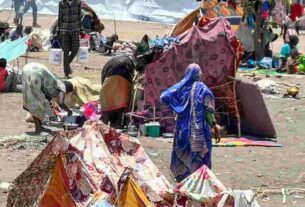Sun 07 April 2024:
Rising temperatures associated with climate change are leading to more diseases transmitted by animals and longer periods of seasonal illnesses such as the flu, according to experts.
Dr. Emine Didem Evci Kiraz of Adnan Menderes University Medical School in Aydin, Türkiye said rising temperatures could lead to significant increases in the effects from ultraviolet radiation from the sun, changes in food and water quality-related diseases, infectious disease agents and their transmissions, animal-derived diseases, and mental health issues. She also highlighted the potential emergence of new diseases, underscoring the vulnerability of our health to climate change.
Kiraz said the average body temperature for a human ranges from 36.1C (96.7F) to 37.8C (100F), with mechanisms such as sweating and heat transfer in place to maintain it.
Increased temperatures stress the heart and blood vessels, cause fluid loss in tissues and cells, and affect kidney function, she said.
Stressing the potential development of metabolic syndromes and disruptions in organ balance under stress, Kiraz warned of emergencies such as drops in blood pressure and sudden fainting due to heat.
Prolonged heat and water loss can render a person immobile and lead to death, she added, while sudden heat waves can also cause mental health issues, violence, and unsafe behavior.
Kiraz highlighted that temperatures around 37C provide a conducive environment for rapid bacterial growth, making the body more vulnerable to unhygienic conditions and increasing the risk of food and waterborne diseases.
Climate change-induced events like floods and power outages can exacerbate water and foodborne illnesses and increase food poisoning cases.
On animals transmitting new diseases and infections due to climate change, Kiraz mentioned the rise in diseases such as arboviruses, dengue fever, Chikungunya fever, and Crimean-Congo hemorrhagic fever.
Kiraz stressed the need not to overlook the impact of climate change on diseases like allergies and asthma, citing events such as air pollution, floods, wildfires, and dust storms that can alter pollen structure and increase disease-causing factors, leading to higher frequencies of conditions like asthma, rhinosinusitis, COPD, and respiratory infections due to extended pollen seasons.
-Source: AA
______________________________________________________________
FOLLOW INDEPENDENT PRESS:
WhatsApp CHANNEL
https://whatsapp.com/channel/0029VaAtNxX8fewmiFmN7N22
![]()
TWITTER (CLICK HERE)
https://twitter.com/IpIndependent
FACEBOOK (CLICK HERE)
https://web.facebook.com/ipindependent
YOUTUBE (CLICK HERE)
https://www.youtube.com/@ipindependent
Think your friends would be interested? Share this story!





